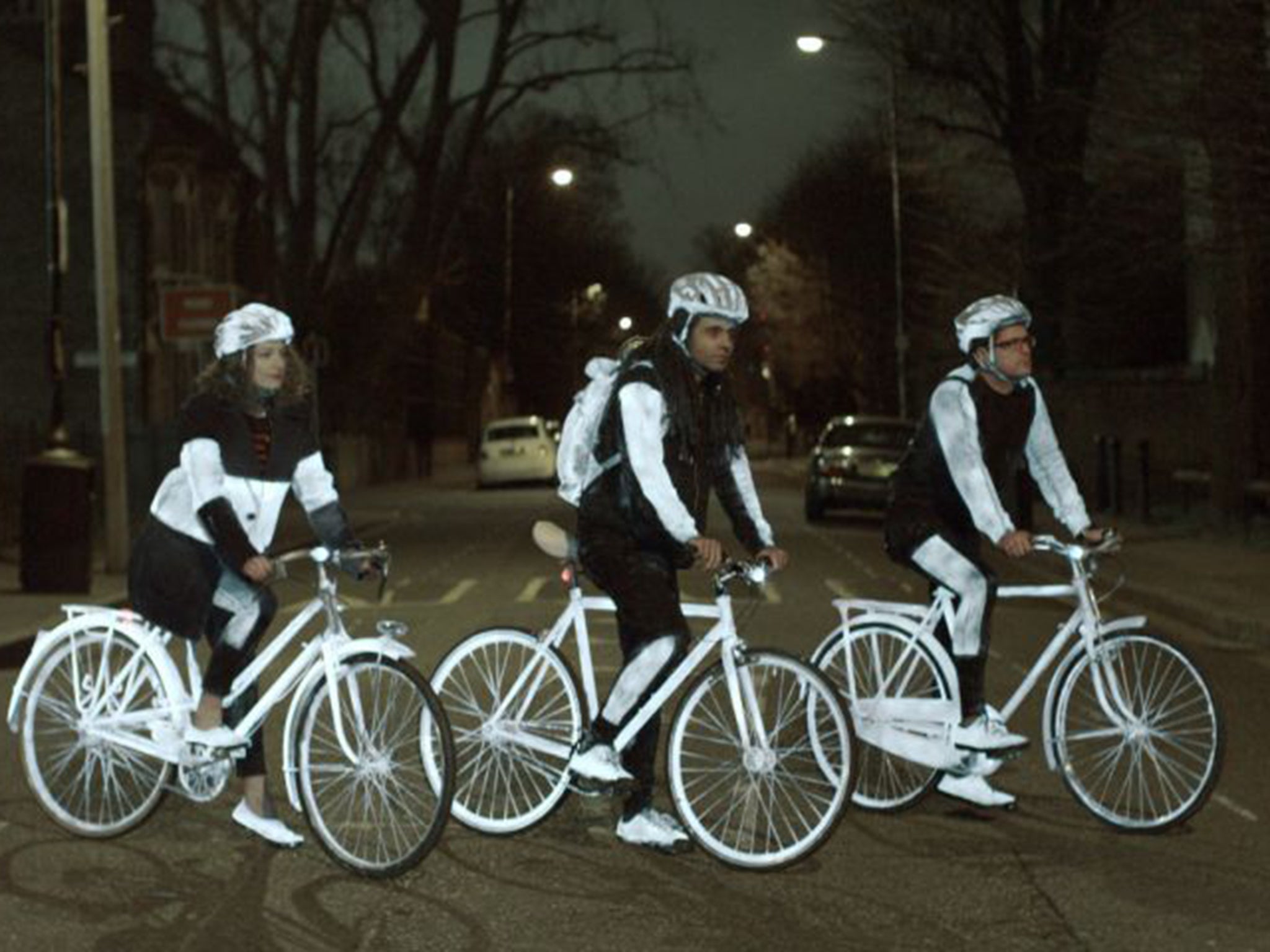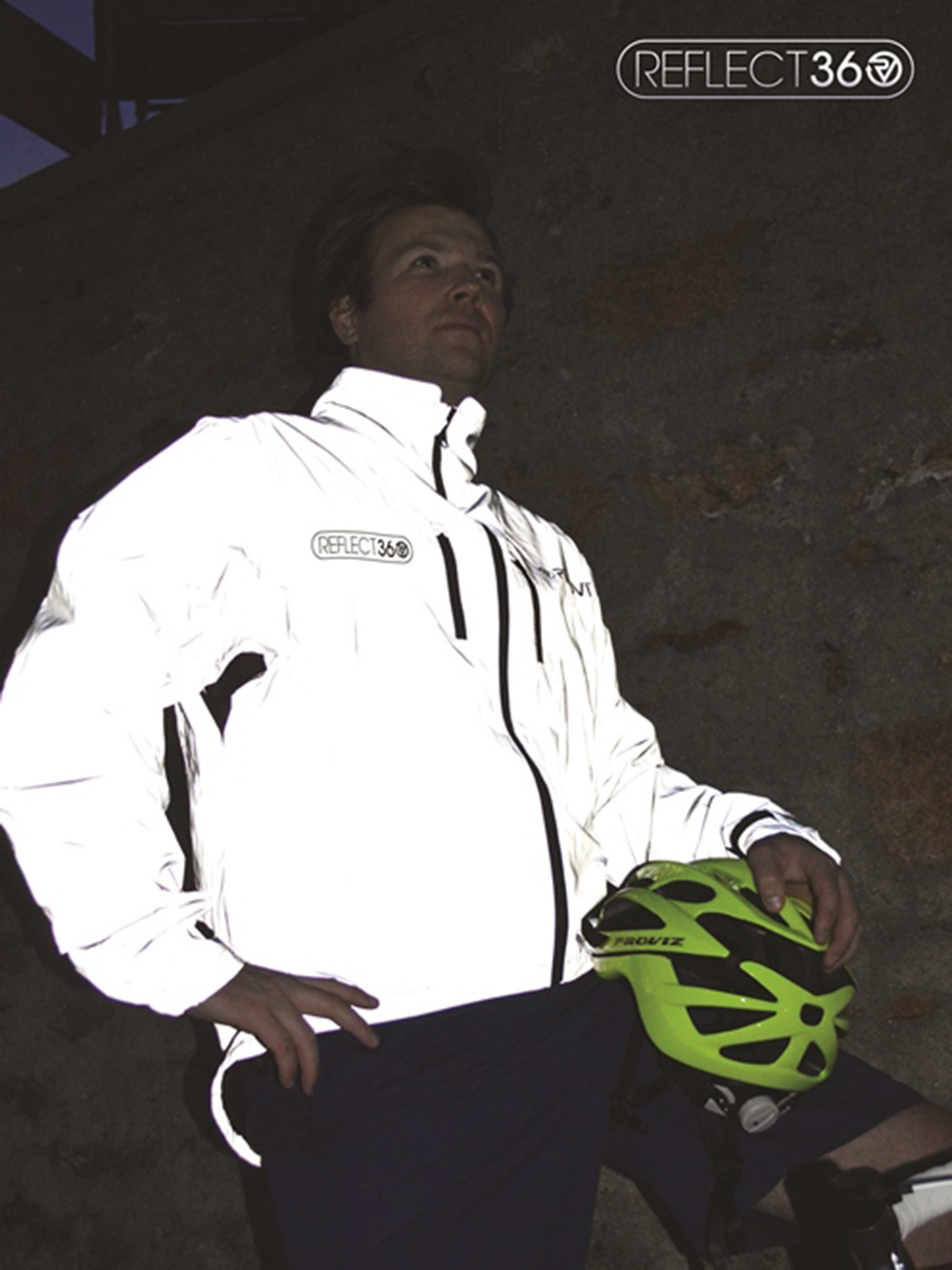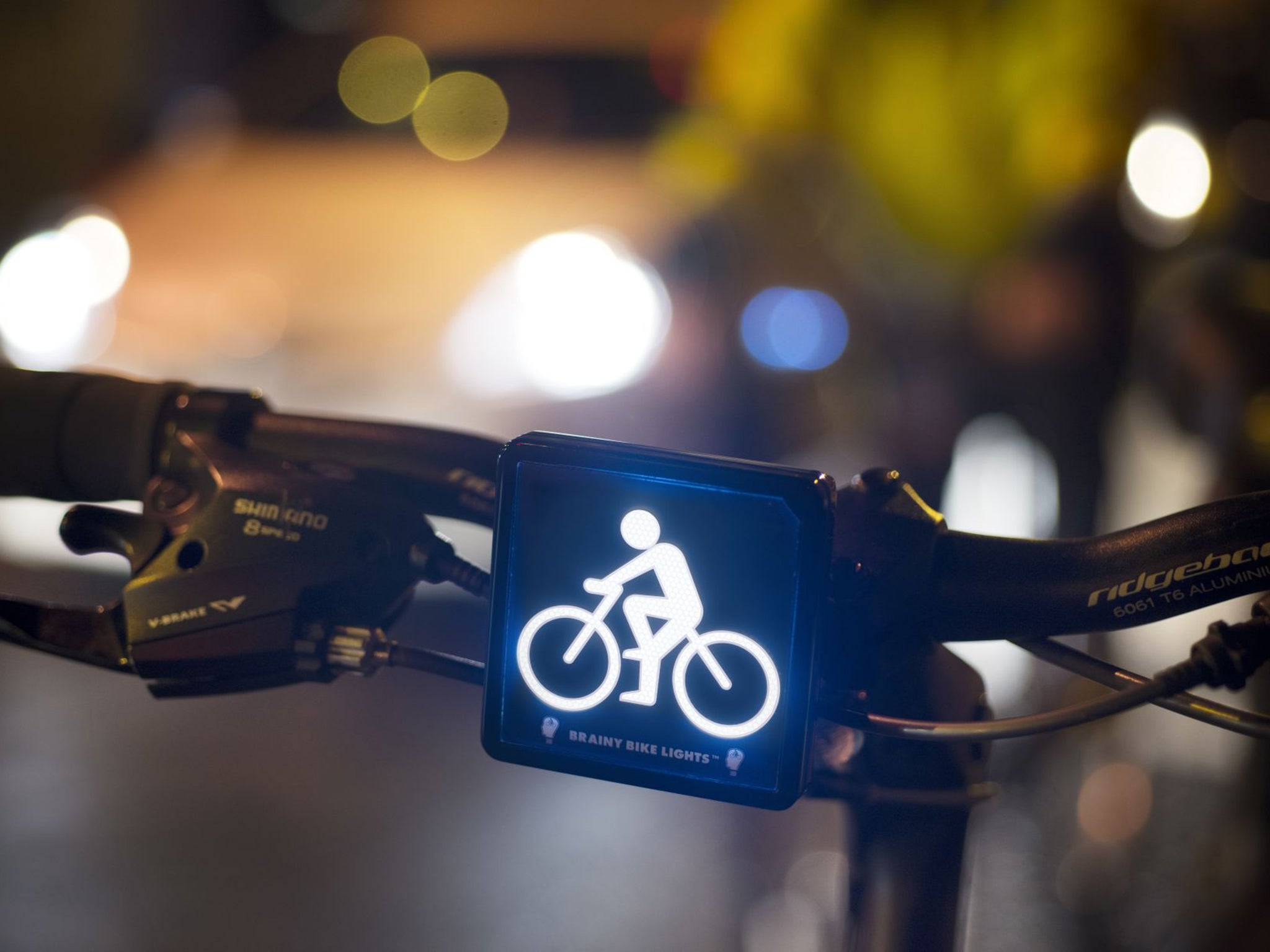Volvo's new hi-vis paint helps riders and bikes stand out - but not everyone is happy
Hi-vis clothing doesn't have to be a fluoro yellow thanks to a raft of companies that are making safety gear cool. But as Volvo creates a paint that lights up bikes, critics claim that it's tantamount to victim shaming, reports Simon Usborne

Your support helps us to tell the story
From reproductive rights to climate change to Big Tech, The Independent is on the ground when the story is developing. Whether it's investigating the financials of Elon Musk's pro-Trump PAC or producing our latest documentary, 'The A Word', which shines a light on the American women fighting for reproductive rights, we know how important it is to parse out the facts from the messaging.
At such a critical moment in US history, we need reporters on the ground. Your donation allows us to keep sending journalists to speak to both sides of the story.
The Independent is trusted by Americans across the entire political spectrum. And unlike many other quality news outlets, we choose not to lock Americans out of our reporting and analysis with paywalls. We believe quality journalism should be available to everyone, paid for by those who can afford it.
Your support makes all the difference.If it seems strange to consider the benefits of being visible by night, just as lengthening days remind us of the joys of riding home in the light, blame Volvo. The Swedish car company has dipped an unexpected tyre in the increasingly crowded – and safe – waters of hi-tech hi-vis, an ugly word traditionally synonymous with two-wheeled fashion disasters (anyone for a fluorescent yellow tabard?).
Life Paint, which Volvo quietly released last month, via a handful of bike shops, was developed in Sweden partly to help farmers find their sheep during short winter days. It's a soluble, transparent paint that only does its thing at night, when millions of particles return any light back to the sender, whether that's a torch-toting shepherd or a tipper truck roaring round a gyratory of doom.
The paint, which can be applied to clothes, bags or bikes, was a smart publicity stunt. The 2,000 silver cans released in the trial were free and designed to promote Volvo's latest rider- and pedestrian-sensing tech. But the company says the success will lead to a bigger campaign next autumn. But this won't please everyone, as a broader boom in innovative hi-vis garb proves controversial in some quarters.
Mikael Colville-Andersen, the Danish urban planning expert and a key figure in the cycling boom of the past decade, launched an online petition in protest, accusing the car company of effectively victim blaming. "Volvo is running the classic smokescreen campaign," he writes. "Trying to place responsibility on pedestrians and cyclists. Wagging their fingers and desperately trying to make them responsible for the carnage caused by Volvo and other big auto brands. Passing the buck."
He points to the apparent lack of research behind the spray, while citing studies that show dark-coloured cars are more likely to be involved in crashes than light ones. He calls on Volvo to make the spray "available to all of its customers around the world and implore them to apply it to their vehicles".
Nick Connor, managing director of Volvo Car UK, says he accepts that the responsibility for safety on the roads "must be shared by all who use them. Life Paint merely draws attention to one issue – cycling in the dark… We believe it to be part of a bigger, wider solution to road and cycling safety in which Volvo also plays a part". Improving road design is also crucial, he says.

Colville-Andersen is a key proponent of a campaign to "normalise" cycling. In countries where it is an integrated part of life and transport (hi Holland), riders tend not to wear helmets or cycle-specific clothing, never mind hi-tech sprays and flashing lights that could warn an oil tanker off rocks. And road safety improves when cycling is seen not as a pursuit or a trial that requires armour, but as natural as taking a stroll.
I put this to Rupert Langly-Smith, co-founder alongside his brother, Anthony, of Jersey-based Proviz, perhaps the biggest UK success story in the hi-vis boom. His Reflect360 jackets (£74.99) and gilets (£49.99) lit up my commute before the clocks changed. What the pair did was simple. They found the most reflective material they could find – a fabric impregnated with microscopic glass beads – and made whole jackets from it, rather than just incorporating hi-vis strips or panels against yellow or orange. The results are startling. The material shimmers as you look at it, like the sail of a satellite, and appears to generate new light on the road, turning cyclists or runners into moving beacons.
They're highly visible, and unusually cool for a hi-vis, but the jackets hardly support the move towards "normalised" cycling. "It's a tricky one," says Langly-Smith, who has sold 12,000 jackets since they launched a year ago. "But I think until we segregate vehicles and cyclists completely, there's a place for products like ours. And I think hi-vis is becoming the new normal. We wanted our product to look like a normal jacket in the day, but with incredible functionality at night."

Nike has joined the race to be seen this year with its Flash range of similar, all-reflective get-up, designed for those who want to steer away from the lollipop-lady look. Other innovators are trying to improve visibility while also using nudge-inspired tactics to change behaviour.
Crawford Hollingworth is co-founder of Behavioural Architects, a consultancy that examines the way consumers think. He's also a cyclist. "There's a thing called priming," he told me last year, when he launched Brainy Bike Lights. The devices use super-bright LEDs, front and rear, to emit the instantly recognisable outline of a person on a bike. "If you read literature embedded with words associated with ageing, such as 'tired' or 'achey', for example, it subconsciously influences your behaviour – you might walk a bit slower. In the same way, a symbol of a bike with a human on it very quickly triggers associations with vulnerability."
"Our brains work on a subconscious level," Hollingworth adds. "We travel on autopilot, which is why we often have no memory of large parts of our journeys." Another new light uses similar imagery. Blaze Lazerlight throws the image of the cyclist on the road ahead, yards in front of the cyclist.
Whatever your view, hi-vis is good for business. The Langly-Smith brothers quit city jobs to launch Proviz in 2010. Their jackets have flown, and the company is developing new ranges for next year, including a premium product with special reflective yarn woven in. If further evidence of a bike boom were needed, seeing is believing.
Cycle of innovation: the latest bike technology
Strava photos
A tweak rather than a total innovation, but Strava, the insanely popular ride-logging and mapping app, now lets you add photos of your morning in the saddle. Just remember to stop before reaching for your phone.
Garmin Vector 2
In the high-end, Mamil-dominated roadbiking world, power has become king. With its smart Vector pedals, Garmin is the latest company to launch a device that measures the force of every pedal stroke – vital data for serious training.
Fitbit Surge
The hi-tech, fitness-monitoring bands have had an update in the Surge smartwatch to include a bike mode, placing the functions of an advanced bike computer – distance, speed, heart rate as well as some mapping capability – on the wrist.
Torch T2
Why not combine two, forgettable and loseable safety features – helmet and lights – into one, smart unit? The improved, second version of the Torch lid has large front and rear lights built into the shell for a Robocop-on-wheel look.
The Hornit
The noisy brainchild of a lawyer-turned-marine-turned-Ironman athlete-turned entrepreneur, the Hornit is the world's loudest bike bell. A unit about the size of a front light issues an ear-piercing 140 decibels, a tiny burst of which can be enough to shake a driver into seeing you.
Join our commenting forum
Join thought-provoking conversations, follow other Independent readers and see their replies
Comments